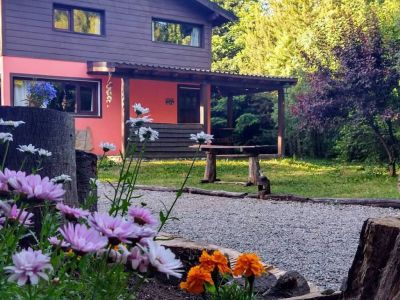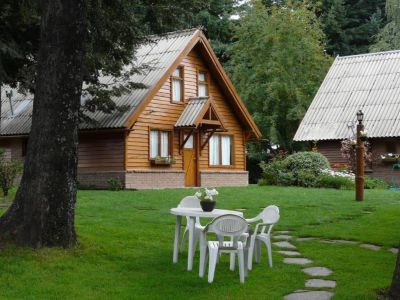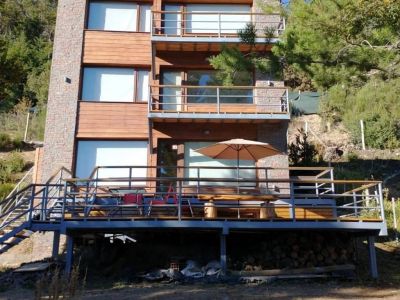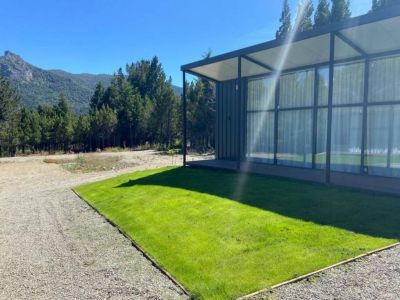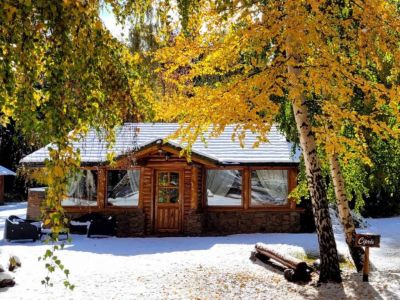Following our sense of smell, we let ourselves be seduced by a tour through the world of chocolate inspired by a magical idea at the oldest chocolate factory in San Carlos de Bariloche. To us, chocolate as a stimulant and attractive beverage still hid certain mysteries. We unveiled them as we advanced along the museum corridors. A young guide pinpointed legends, sayings and written records passed from generation to generation and dating back from the days of the Mayas and the Aztecs. The cocoa plantations, the main ingredient of chocolate, have always developed in tropical latitudes. A scale model displayed a replica of the tree, its pods and seeds. At first sight, the seed did not resemble cocoa at all. Only after fermentation did it show its main feature: an energetic, strong aroma full of character.
Chocolate Museum in Bariloche
The various halls and the warmth of our guide made the tour very amusing and educational. The varieties of chocolate and their processes were presented clearly with drawings and posters that illustrated everything we heard. The Aztecs made an effort to leave hieroglyphics about their daily customs. As a result, we learned how they ground the cocoa beans and turned them into a drink they would offer their gods. They bestowed a mystical and religious value upon this product. Besides, the Aztecs would use the cocoa beans as currency. That was our first approach to “xocolatl”. We imagined it was not as pleasant as the bars we enjoy today.
Conquering Flavors
When Hernán Cortes took the novelty to Spain, it was Carlos V and his court the first to taste the pods brought along from America. Years later, the recipe evolved and sugar and heat were added to the product. Nowadays, it is easy to move about the main streets in Bariloche and find chocolate novel ideas, but how many centuries have passed since its discovery to the results we have nowadays. Following the traces of history, we were told that chocolate spread from Spain to other European countries and it was England, France and Italy who assumed the task of specializing in chocolate making in all its varieties. Precisely, the first chocolate maker who arrived in Bariloche in 1947 was Italian: Aldo Fenoglio. He had only brought his copper pots and his invaluable knowledge. His experience soon became popular starting with his chocolate factory, which he named Tronador. At the same time, his family arrived in the country. Among them, Benito Secco founded El Turista Chocolate Factory. Tronador changed its name to Fenoglio and the city began to feel identified with its aromas. We entered the present era, when chocolate in our country developed particularly in Bariloche, even if the porteño society already shared it in the social gatherings of the nineteenth century. Mariquita Sánchez de Thompson was famous for offering hot chocolate with her pastries during the meetings she organized at her house. Politics and music would become allied with the taste for chocolate. At the end of the tour around the museum, we observed some china cups and saucers from several periods and packages of the most famous chocolate in the world inside some glass cabinets. All this makes up what we know so far about the history of such a pleasant and universal product. The production area was huge and visible through inner windows. The chocolate makers were working that delicacy for all visitors to watch. We were told about the steps the cocoa beans undergo in order to give shape to the various products. Grinding, refining and being mixed with cocoa butter, milk and sugar at a constant temperature. All of them were neatly packaged. In one corner, two ladies were decorating chocolates, bars and shapes by hand. The huge and modern machines recently incorporated enhance the elaboration process. When it was time to taste the final result, our taste buds became fully activated. The rest of the job was done by our brains, which put pleasure hormones to work and to ask us for another piece of chocolate. Mónica Pons
Eduardo Epifanio
Contact of the excursion or tour
Museo del Chocolate Fenoglio
Av.Bustillo 1200, San Carlos de Bariloche, Río Negro, Argentina
Phone: +54 294-422170


















